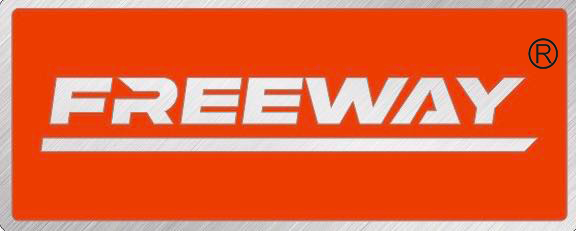En la industria de la panificación, a “revolución silenciosa” se está desarrollando. Compra un pastelito en una tienda de conveniencia., y podría haber estado congelado durante medio año; the popular European buns in milk tea shops could come from centralized factories thousands of miles away. Frozen bakery, once a hidden player in the industrial chain, has now become a coveted “cake” for supermarkets, convenience stores, and tea brands. This article explores the rising trends of frozen bakery and why it represents a new business opportunity,freeway bakery machine can help you hold this Chance.
The Emergence of a Hundred-Billion Market: Why the Baking Industry Embraces “Cold” Thinking?
The boom of frozen bakery is no accident but a result of multiple factors converging, marking it as a promising business frontier.
- Cost Reduction: Lowering Industry Thresholds
Traditional baking faces high labor and rent costs, requiring professional bakers and expensive equipment. En contraste, frozen bakery only needs thawing and re-baking, drastically reducing operational barriers. This cost advantage allows more brands, including small and medium-sized enterprises, to enter the market, expanding the industry’s scale. - Meeting Consumer Demand for Convenience
Generation Z prioritizes convenience over the “freshly made” sentiment. Frozen bakery caters perfectly to their habit of “enjoying anytime, anywhere.” Whether it’s a quick breakfast at a convenience store or a snack with milk tea, frozen products fit seamlessly into modern fast-paced lifestyles. - Supply Chain Maturity: From “Basic” Para “Sophisticated”
Technological advancements have transformed frozen bakery. Previously criticized for dry, hard textures, today’s products use liquid nitrogen quick-freezing and yeast dormancy technologies, making defrosted items nearly indistinguishable from freshly baked ones. When consumers can’t tell the difference, the industry’s rules are rewritten, paving the way for broader acceptance.
Convenience Stores: “Time Magic” Solving Supply Pain Points
Convenience stores have become a key battlefield for frozen bakery, leveraging its unique advantages to seize business opportunities.
Traditional bread has a shelf life of only 2-3 days, leading to uneven regional supply and high waste. Frozen dough, however, can be stored for 6-12 months, enabling centralized production and national distribution. Giants like Lawson and FamilyMart have adopted frozen pastries and Danish pastries as standard breakfast items, ensuring stable quality and reducing scrap losses.
This “time magic” not only solves supply chain inefficiencies but also creates new revenue streams. By offering consistent, long-lasting products, convenience stores can attract more customers seeking reliable breakfast or snack options, boosting daily sales.
Milk Tea Shops: Cross-Border Integration with Frozen Bakery
Tea brands are also tapping into frozen bakery, turning it into a new weapon to increase revenue and enhance customer experience.
Through centralized production of frozen dough and on-site baking, tea shops save space and ensure quality control. More cleverly, bundling bread with milk tea raises the average transaction value and strengthens “scenario-based consumption” – eating bread prompts a desire for milk tea, and drinking milk tea encourages pairing with bread.
Sin embargo, challenges exist. Over-reliance on frozen supply chains may blur brand differentiation if products from different stores taste identical. The solution lies in balancing efficiency with uniqueness, such as using “semi-frozen bases + on-site embellishments” (p.ej., fresh cream or cut fruits) to maintain a sense of craftsmanship.

Current Industry Landscape: Opportunities and Challenges
Frozen bakery presents significant opportunities, but the market is still evolving with both winners and strugglers.
- First-Mover Advantage of Leading Enterprises
Head companies have gained an edge by leveraging mature supply chains and distribution networks, dominating key channels like convenience stores and large supermarkets. - Plight of Small and Medium-Sized Brands
Smaller players face high cold chain costs and limited channel resources, struggling to compete. Additionally, the lack of unified industry standards may trigger consumer doubts about product quality in the long run, hindering market expansion.
Future Trends: Eficiencia, Experience, and Trust
The future of frozen bakery hinges on three pillars: efficiency, experience, and trust, which will shape its growth as a business opportunity.
- Eficiencia: A Win-Win for the Catering Industry
Frozen bakery is an inevitable outcome of catering industrialization, enabling the “centralized factory + terminal reheating” model to replace the high-cost “front store, back factory” structure of traditional baking. With automated production and intelligent cold chains, costs will drop further, potentially spawning “ultra-cost-effective bakery chains” that disrupt the industry through rapid expansion.
Differentiation will come not from price alone but from “supply chain efficiency + micro-innovation,” ensuring brands stand out even with standardized production.
- Experience: Technology Enhancing “Freshness”
Consumers’ obsession with “freshness” persists, and frozen bakery is approaching this ideal through technology. Liquid nitrogen flash freezing, yeast dormancy, and precision re-baking make defrosted products taste nearly fresh. Future breakthroughs will focus on experience design – convenience stores using baking aromas and transparent kitchens to create a “freshly baked” atmosphere, or tea shops adding on-site touches to strengthen craftsmanship perception. - Trust: Transparency as a Selling Point
Many brands currently hide their use of frozen products to maintain the “freshness illusion,” but this ambiguity is unsustainable. As information becomes more transparent, rational consumers will value honesty over whether a product is frozen. Successful brands will embrace transparency, using “-18℃ freshness locking” as a selling point or opening supply chains for traceability. This shift from “hidden” Para “open” will turn frozen bakery into a mainstream, trusted category.
Conclusión
Frozen bakery is no longer a niche product but a rising business opportunity driven by cost advantages, technological progress, and changing consumer habits. Its integration into convenience stores, milk tea shops, and potential new chains highlights its versatility.
While challenges like standardization and differentiation remain, the trends of improving efficiency, enhancing experience, and building trust will propel frozen bakery into a mature, hundred-billion market. For brands willing to innovate and adapt, frozen bakery offers a chance to reshape the baking industry and capture significant growth.
To explore more, the Bakery Exhibition serves as a window into this evolving sector.
 autopista
autopista
